A Compact Broadband Antenna with Dual-Resonance for Implantable Devices
Abstract
:1. Introduction
2. Antenna Structure and Design
2.1. Antenna Structure
2.2. Current Distributions of the Radiating Strips
2.3. Parametric Study
3. Results and Discussion
4. Conclusions
Author Contributions
Funding
Conflicts of Interest
References
- Greatbatch, W.; Homes, C.F. History of implantable devices. IEEE Eng. Med. Biol. Mag. 1991, 10, 38–41. [Google Scholar] [CrossRef] [PubMed]
- Kiourti, A.; Nikita, K.S. A review of implantable patch antennas for biomedical telemetry challenges and solutions. IEEE Trans. Antennas Propag. 2012, 54, 210–228. [Google Scholar] [CrossRef]
- Kiourti, A.; Nikita, K.S. Implantable antennas: A tutorial on design, fabrication, and in vitro/in vivo testing. IEEE Microw. Mag. 2014, 15, 77–91. [Google Scholar]
- Kimi, J.; Rahmat-samii, Y. Plana inverted F antennas on implantable medical devices: Meandered type versus spiral type. Microw. Opt. Technol. Lett. 2006, 48, 567–572. [Google Scholar] [CrossRef]
- Liu, C.R.; Guo, Y.X.; Xiao, S.Q. A hybrid patch/slot implantable antenna for biotelemetry devices. IEEE Antennas Wirel. Propag. Lett. 2012, 11, 1646–1649. [Google Scholar] [CrossRef]
- Li, H.; Guo, Y.X.; Liu, C.R.; Xiao, S.Q. A miniature-implantable antenna for MedRadio-band biomedical telemetry. IEEE Antennas Wirel. Propag. Lett. 2015, 14, 1176–1179. [Google Scholar]
- Li, R.Q.; Xiao, S.Q. Compact slotted semi-circular antenna for implantable medical devices. Electron. Lett. 2014, 50, 1675–1677. [Google Scholar] [CrossRef]
- Liu, W.C.; Yeh, F.M.; Ghavami, M. Miniaturized implantable broadband antenna for biotelemetry communication. Microw. Opt. Technol. Lett. 2008, 50, 2407–2409. [Google Scholar] [CrossRef]
- Lee, C.M.; Yo, T.C.; Huang, F.J.; Luo, C.H. Bandwidth enhancement of planar inverted-F antenna for implantable biotelemetry. Microw. Opt. Technol. Lett. 2009, 51, 749–752. [Google Scholar] [CrossRef]
- Tsai, C.L.; Chen, K.W.; Yang, C.L. Implantable wideband low-SAR antenna with C-shape coupled ground. IEEE Antennas Wirel. Propag. Lett. 2015, 14, 1594–1597. [Google Scholar] [CrossRef]
- Xu, L.J.; Guo, Y.X.; Wu, W. Bandwidth enhancement of an implantable antenna. IEEE Antennas Wirel. Propag. Lett. 2015, 14, 1510–1513. [Google Scholar] [CrossRef]
- Alrawashdeh, R.S.; Huang, Y.; Kod, M.; Sajak, A.A.B. A Broadband Flexible Implantable Loop Antenna with Complementary Split Ring Resonators. IEEE Antennas Wirel. Propag. Lett. 2015, 14, 1506–1509. [Google Scholar] [CrossRef]
- Das, S.; Mitra, D. A Compact Wideband Flexible Implantable Slot Antenna Design with Enhanced Gain. IEEE Trans. Antennas Propag. 2018, 66, 4309–4314. [Google Scholar] [CrossRef]
- Karacolak, T.; Hood, A.Z.; Topsakal, E. Design of a dual-band implantable antenna and development of skin mimicking gels for continuous glucose monitoring. IEEE Trans. Microw. Theory Tech. 2008, 56, 1001–1008. [Google Scholar] [CrossRef]
- Karacolak, T.; Cooper, R.; Unlu, E.S.; Topsaka, E. Dielectric of porcine skin tissue and in vivo testing of implantable antennas using pigs as model animals. IEEE Antennas Wirel. Propag. Lett. 2012, 11, 1686–1689. [Google Scholar] [CrossRef]
- IEEE Standard for Safety Levels with Respect to Human Exposure to Radio Frequency Electromagnetic Fields, 3 kHz to 300 GHz; IEEE Standard C95. 1-1991; IEEE: Piscataway, NJ, USA, 1999.
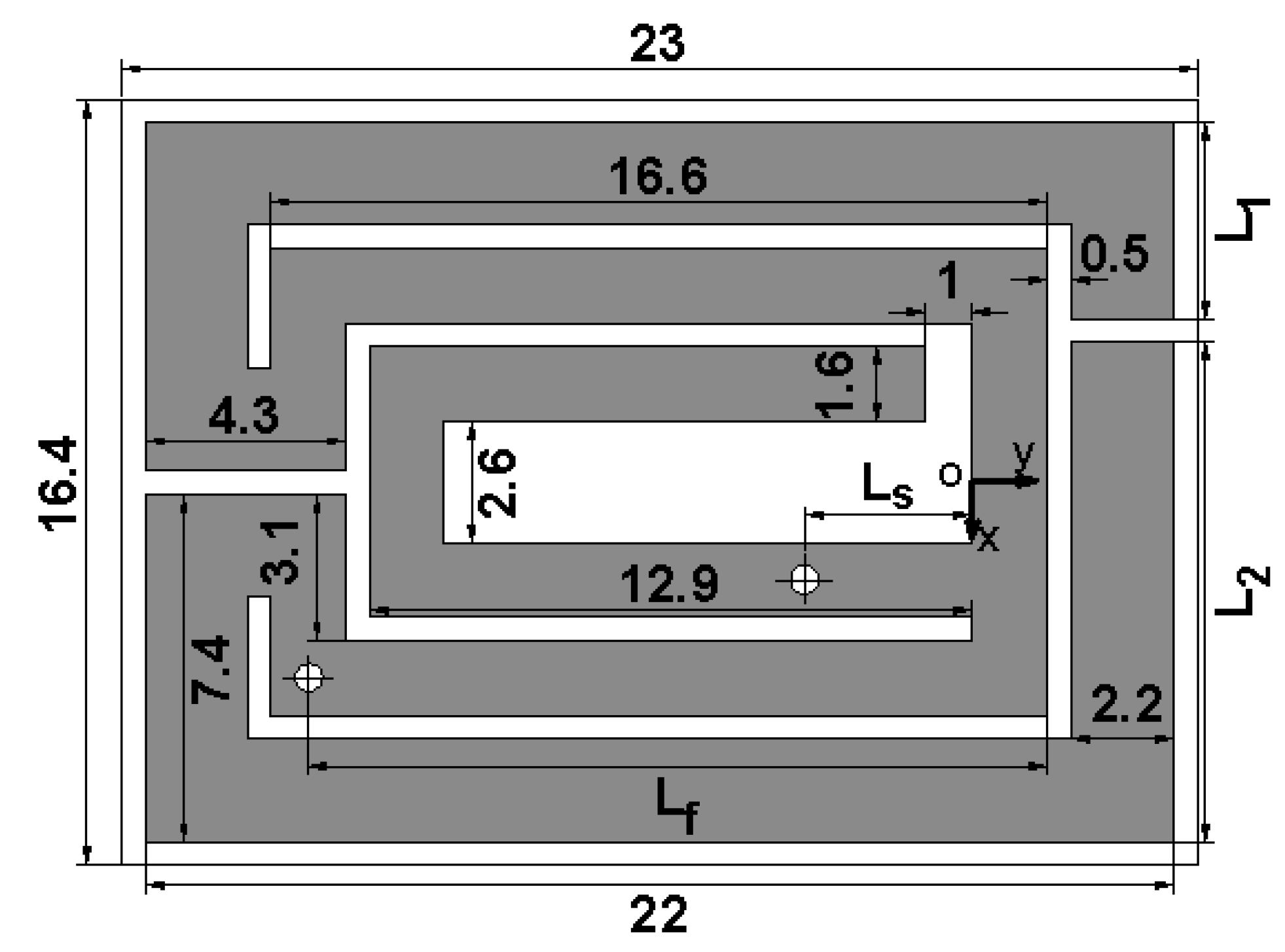
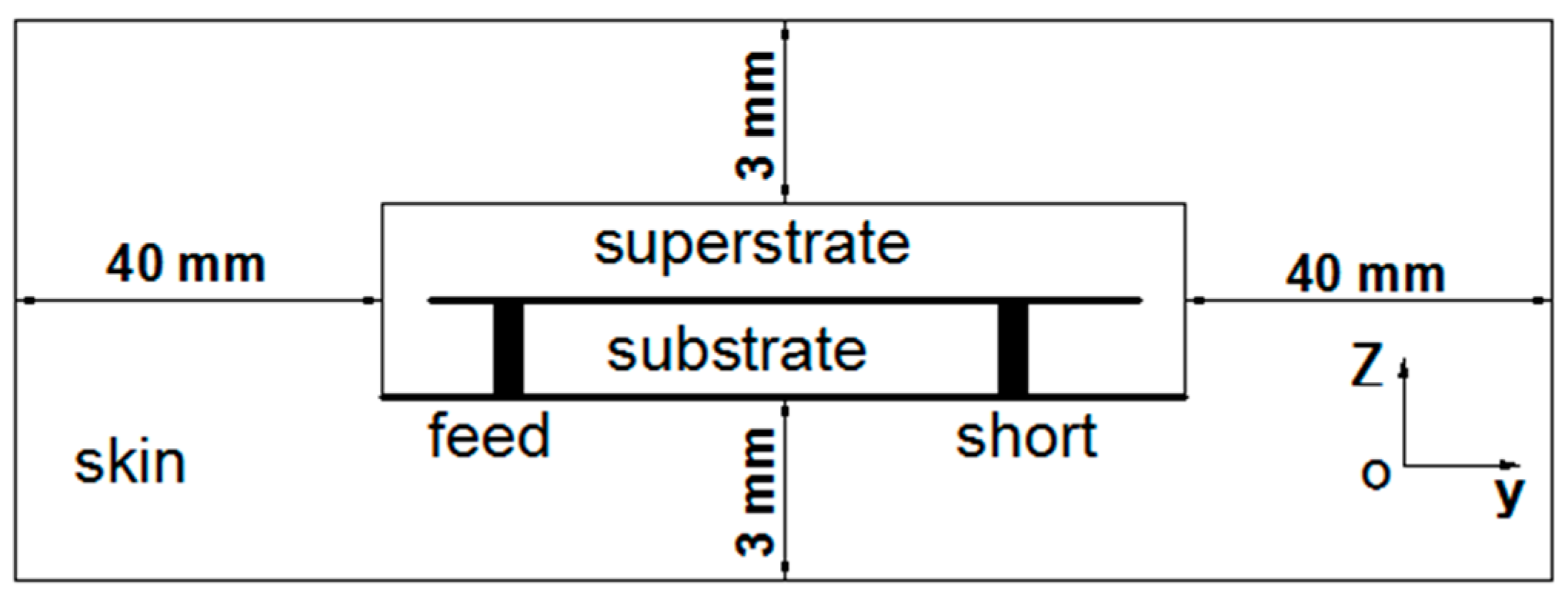
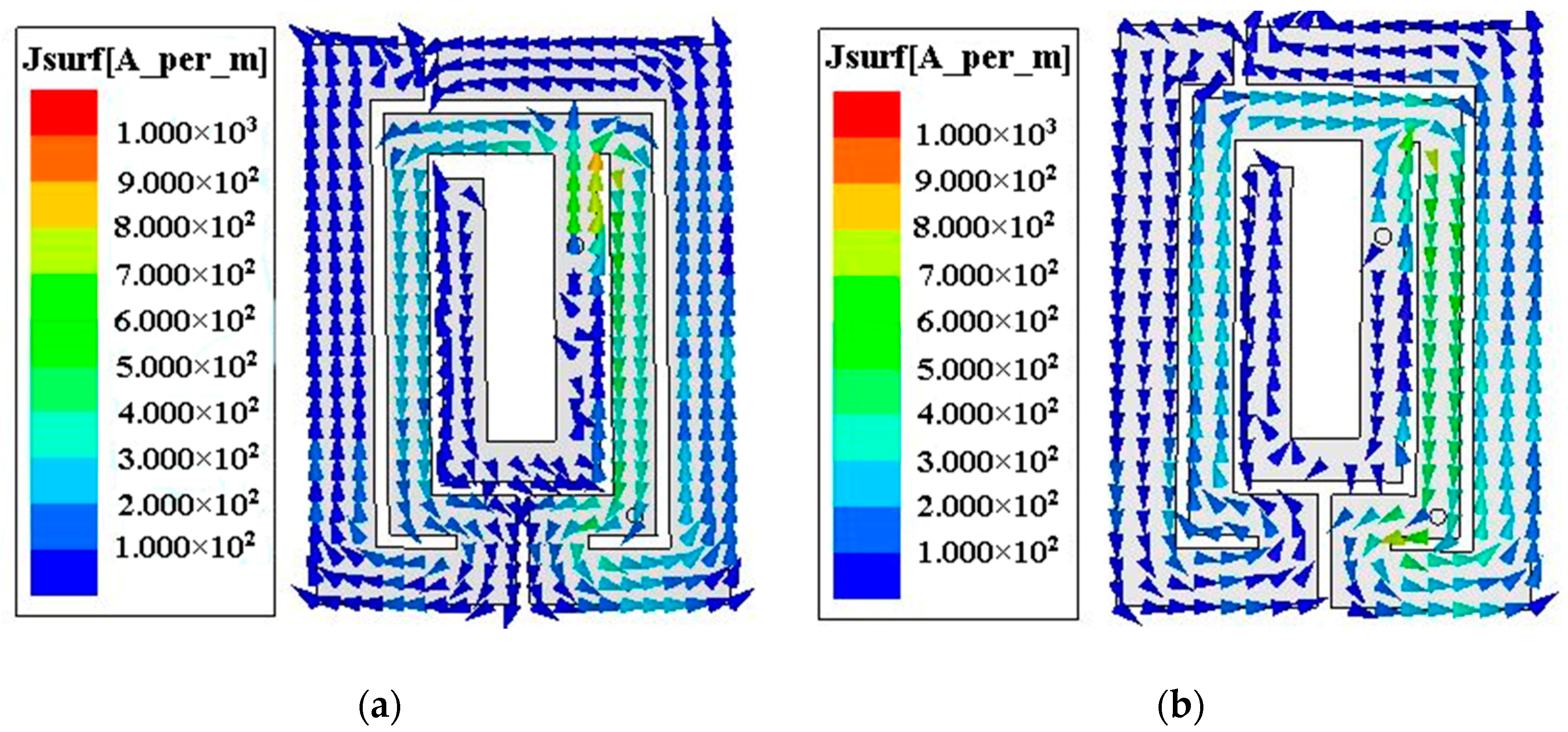

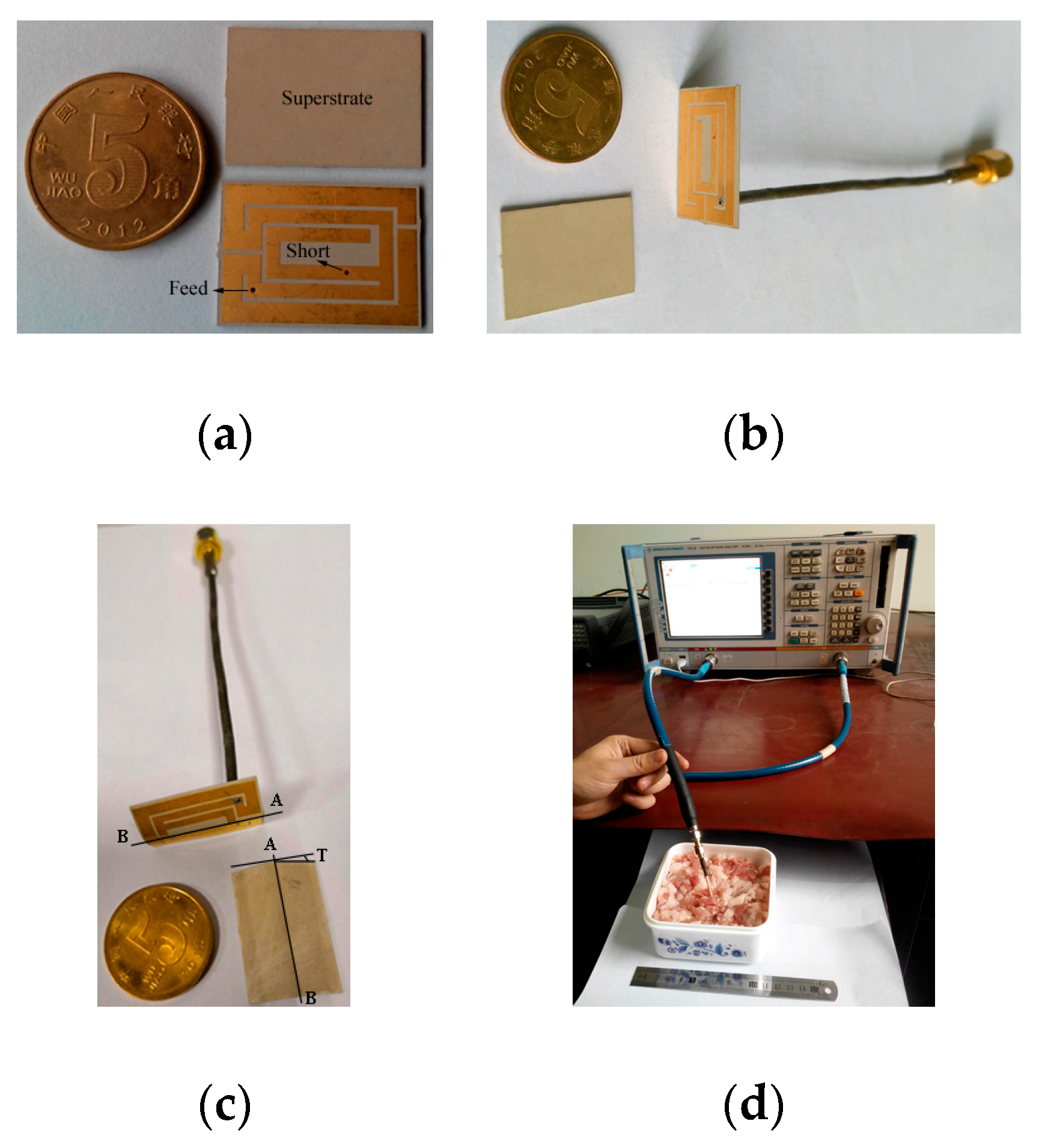
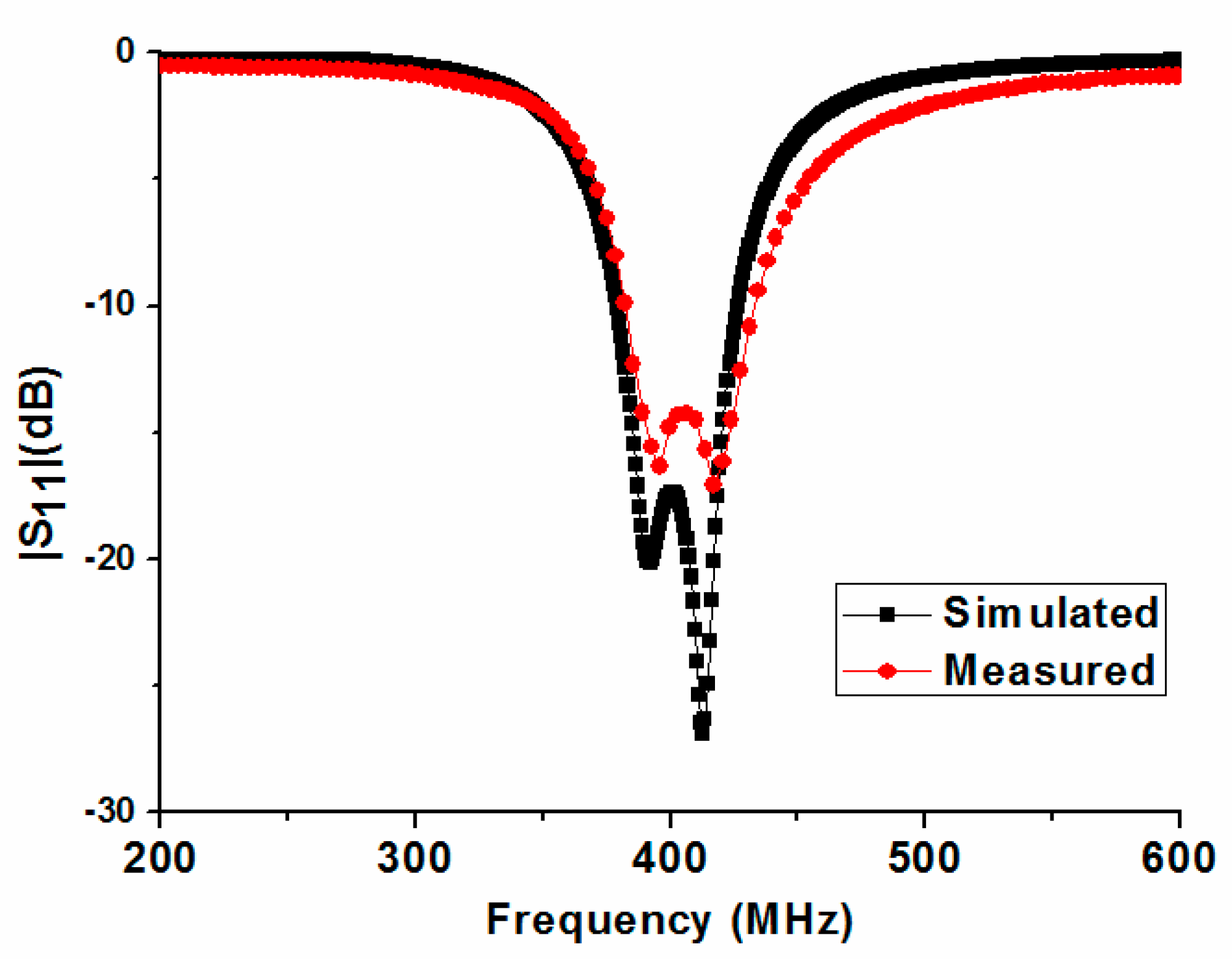
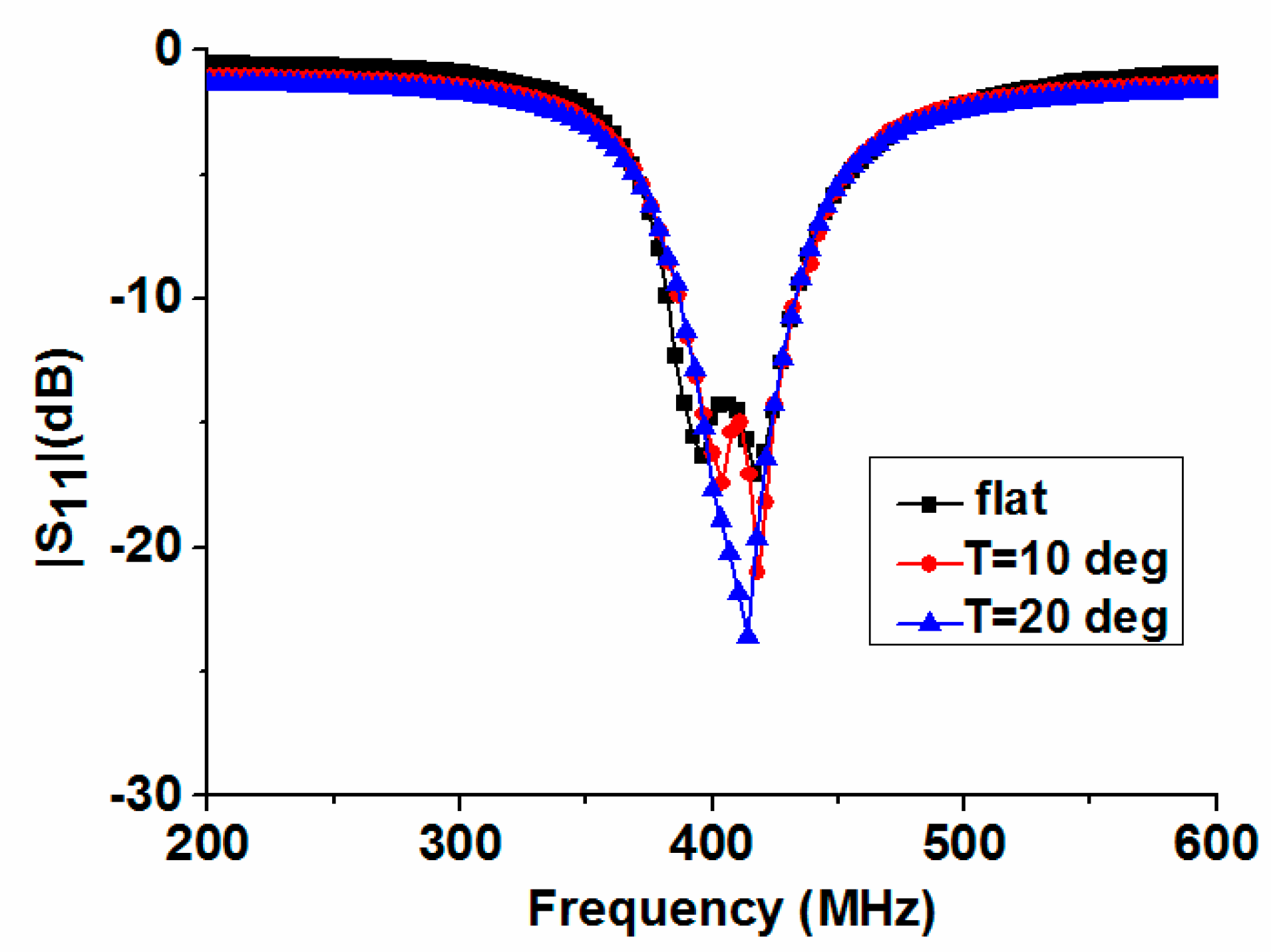
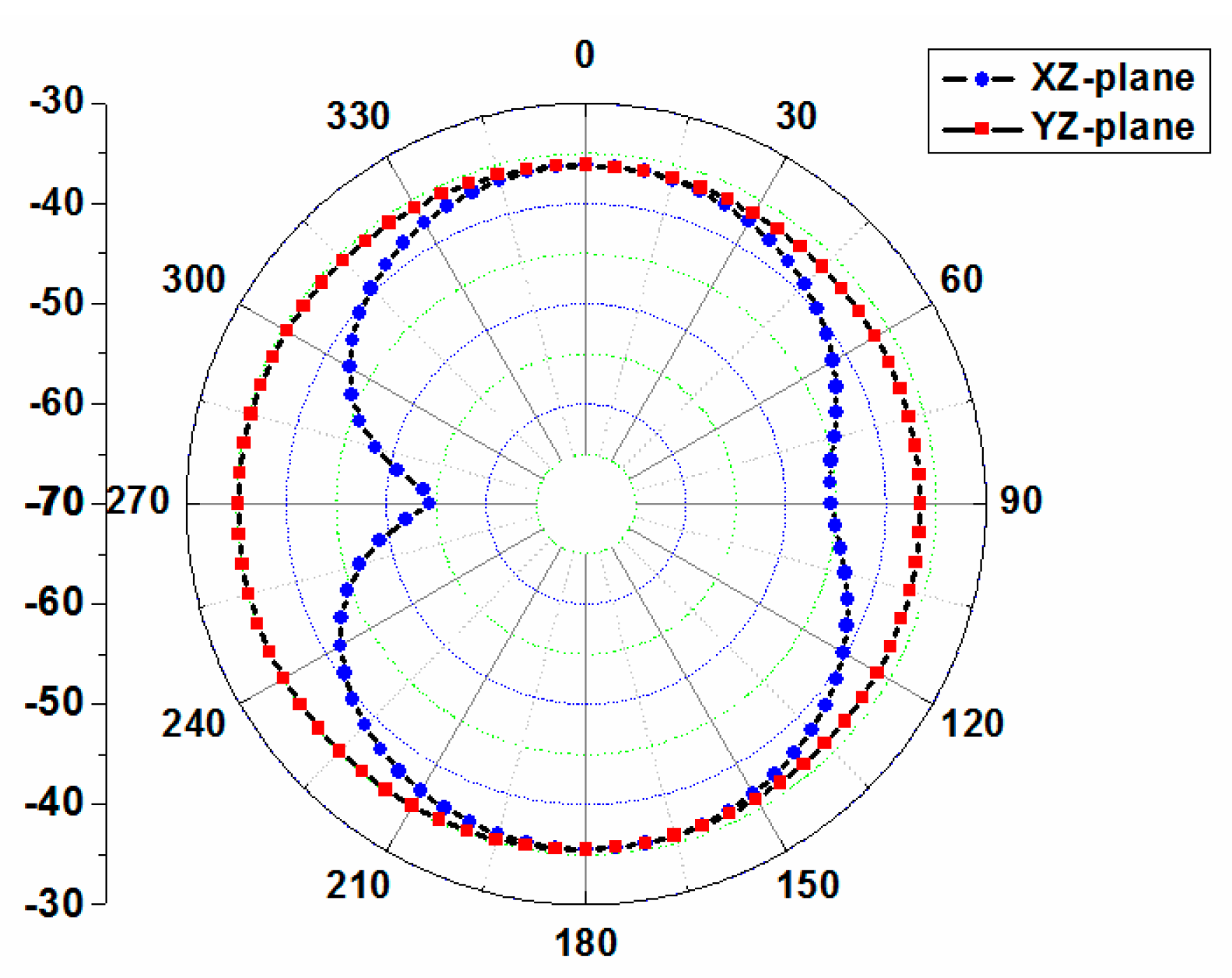
© 2019 by the authors. Licensee MDPI, Basel, Switzerland. This article is an open access article distributed under the terms and conditions of the Creative Commons Attribution (CC BY) license (http://creativecommons.org/licenses/by/4.0/).
Share and Cite
Li, R.; Li, B.; Du, G.; Sun, X.; Sun, H. A Compact Broadband Antenna with Dual-Resonance for Implantable Devices. Micromachines 2019, 10, 59. https://doi.org/10.3390/mi10010059
Li R, Li B, Du G, Sun X, Sun H. A Compact Broadband Antenna with Dual-Resonance for Implantable Devices. Micromachines. 2019; 10(1):59. https://doi.org/10.3390/mi10010059
Chicago/Turabian StyleLi, Rongqiang, Bo Li, Guohong Du, Xiaofeng Sun, and Haoran Sun. 2019. "A Compact Broadband Antenna with Dual-Resonance for Implantable Devices" Micromachines 10, no. 1: 59. https://doi.org/10.3390/mi10010059
APA StyleLi, R., Li, B., Du, G., Sun, X., & Sun, H. (2019). A Compact Broadband Antenna with Dual-Resonance for Implantable Devices. Micromachines, 10(1), 59. https://doi.org/10.3390/mi10010059





